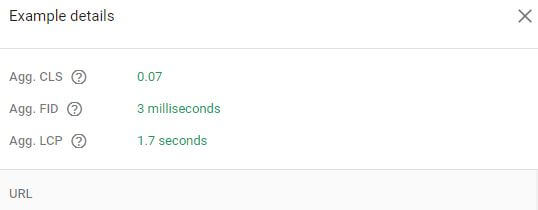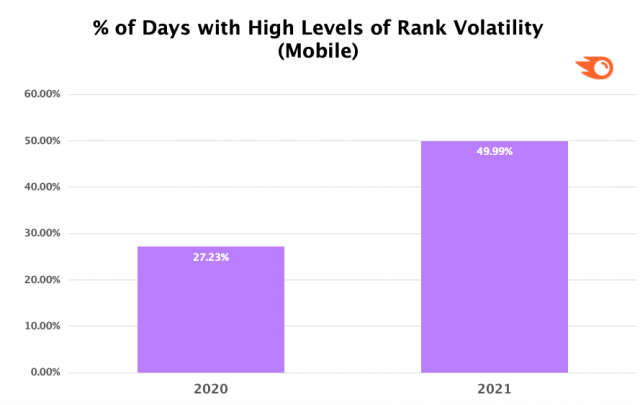Join Fusion’s SEO team as we round up last month’s major industry updates.
Google Updates Search Quality Rater Guidelines
A year on from the previous update, Google made several changes to the search quality raters’ guidelines. These come as a 172 page PDF that according to Google “help make sure Search is returning relevant results from the most reliable sources available”.
To summarise, the most recent update included the following changes:
- Expanded the definition of the YMYL subcategory ‘Groups of people’
- Refreshed guidance on how to research reputation information for websites and content creators
- Restructured and updated ‘Lowest Page Quality’ section; reorganized and refreshed examples to reflect new structure
- Simplified the definition of ‘Upsetting-Offensive’ to remove redundancy with Lowest Page Quality section
- Minor changes throughout (updated screenshots and URLs, wording, and examples for consistency; removed outdated examples; fixed typos; etc.)
The ratings your site may receive from a search quality evaluator do not directly impact rankings, however it is worth reviewing the guidelines to better understand the type of page content that Google prefers to rank.
Continuous Scroll Rolling Out Across Mobile Google Search
As of the 14th October, Google began rolling out continuous scrolling for search results on mobile devices. Initially, this is for “most” English searches on the mobile in the U.S and is expected to be carried over to other international search results pages – including the UK – in the near future.
The change comes in to make browsing search results “more seamless and intuitive” and now means that when you get to the bottom of a search results page on your phone, the next set of results (previously page 2) will now automatically load.
For example:

Following the announcement, Google has stated that continuous scroll is not the widely known ‘infinite scroll’, as the new feature will only load up to a maximum of four pages when you will then be shown a “See more” button. Within the same set of tweets, Google also explained that this will not change how reporting works within Search Console:
Google Adds Granular Scores To Search Console Core Web Vitals Report
The Core Web Vitals report in Google Search Console is now showing more granular scoring data when you select a URL within the report to view more details.
Displaying as:

The scores shown are not however for individual URLs – as you expect from other testing tools such as the PageSpeed report – they are for the URL group, meaning Google has assigned an issue “to a group of URLs that provide a similar user experience. This is because it is assumed that performance issues in similar pages are probably due to the same underlying problem, such as a common slow-loading feature in the pages.”
Google Search Results More Volatile In 2021
Mordy Oberstein, the head of communications at Semrush posted a series of tweets claiming that Google search results have been far more volatile through 2021 than in the previous year. Data pulled from the Semrush Sensor shows that SERP volatility is up 84% on mobile and 68% on desktop for 2021 YTD compared to 2020.
Mobile SERP volatility 2020 vs 2021:

Desktop SERP volatility 2020 vs 2021:

The Semrush Sensor tracks volatility of Google SERPs based on daily changes in rankings, although these daily changes cannot be directly attributed to algorithm updates, some believe it is a good indicator that of Google’s algorithm updates, meaning they may have been more sever this year.
Testing Tools In Google Search Console Now Match The URL Inspection Tool
To further help users find and fix issues in web pages, Google has updated three of its standalone public testing tools within Search Console to now provide a standardization of features and align with the URL Inspection Tool. Previously, the AMP, Mobile Friendly and Rich Results testing tools have all advanced separately at different paces, meaning there were multiple tools from Google each showing similar information in varied ways.
A blog post from Google titled “Aligning Search Console testing tools and the URL Inspection tool” explains that “we’re making changes in their designs and improving features to be fully aligned with the URL Inspection tool”. More specifically, from now on the following fields will be displayed both on the public testing tools and on the URL Inspection Tool:
- Page availability – Whether Google was able to crawl the page, when it was crawled, or any obstacles that it encountered when crawling the URL.
- HTTP headers – The HTTP header response returned from the inspected URL.
- Page screenshot – The rendered page as seen by Google.
- Paired AMP inspection, Inspect both canonical and AMP URL.
If you found this update useful, check out our latest blog posts for the latest news, and if you’re interested in finding out more about what we can do for your brand, get in touch with the team today.
by George Bonelle





